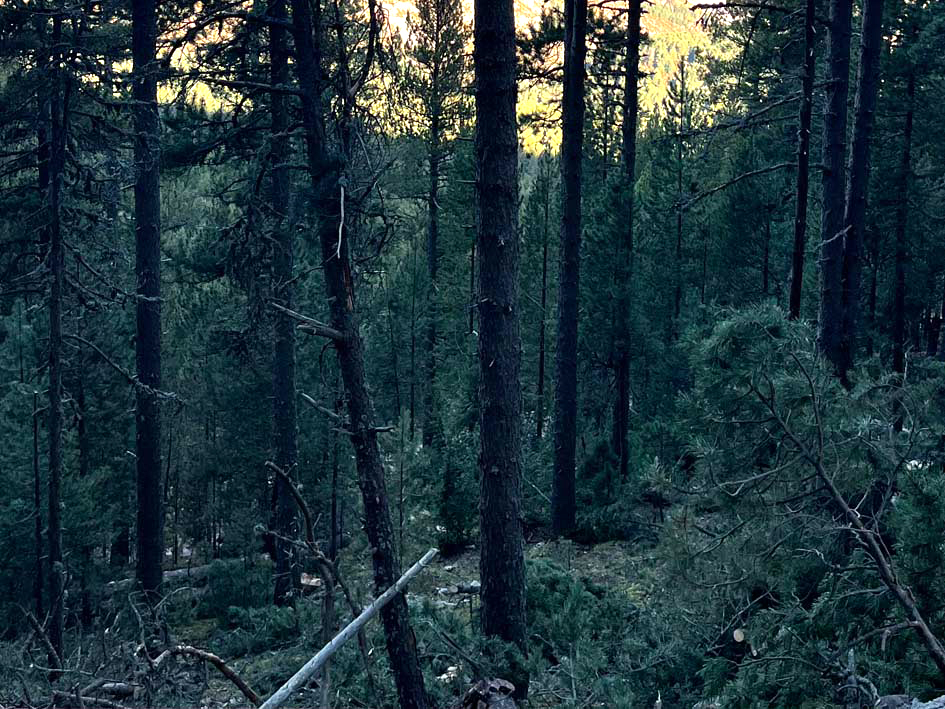The first forestry actions already cover more than 60 hectares and aim to balance timber production with biodiversity conservation.
The project promotes close-to-nature silviculture and free forest evolution to enhance resilience and foster biodiversity in mountain pine forests in the Pyrenees.
The LIFE UNCINATA Project, focused on the conservation and improvement of Pyrenean Mountain pine forests, includes a series of actions to preserve this high-mountain habitat, classified by the EU as a priority habitat of community interest – of which Catalonia holds the largest share in all of Europe.
The project’s actions are based on improving the conservation status of this Pinus Uncinata forest habitat through specific interventions in different areas of the Pyrenees of Catalonia and Navarre. Broadly speaking, the actions seek to address some of the main threats to this habitat, such as wildfires, human over-frequentation, herbivore pressure on natural regeneration, or forest management that does not integrate biodiversity conservation criteria.
Regarding forest management, this summer, up to 60 ha of forest have been managed with two complementary but distinct approaches. On the one hand, a multifunctional forest management model based on the principles of close-to-nature silviculture has been implemented, integrating key elements for biodiversity conservation and improvement. The multifunctional approach seeks to balance different objectives: timber production, biodiversity conservation, and increased resilience against disturbances such as wildfires. This model applies selective thinning with tree-by-tree marking, relying on the natural dynamics of the ecosystem, favoring constant natural regeneration, structural and species diversity, and soil fertility, while maintaining canopy cover, biodiversity-relevant elements (habitat trees, deadwood, etc.), and generating commercial timber.
“This way, a more diverse, vital, and resilient forest is achieved, better prepared for situations of biotic or abiotic stress,” explains Víctor Sazatornil, project coordinator and head of the Conservation Biology Group at the Forest Science and Technology Centre of Catalonia (CTFC). Work has already begun in the counties of Alt Urgell, Cerdanya, and Berguedà, where nearly 60 hectares have been implemented. In the fall, work will also begin in the counties of Ripollès, Pallars Jussà, and Pallars Sobirà.

The other type of management, also launched this summer, focuses on improving habitat in stands destined for free evolution. In this case, forests that are already in an acceptable conservation state or host species of special interest, such as the Eurasian capercaillie or the boreal owl, have been selected. These forests are beginning to show characteristics of mature stands, such as very large or old trees, abundant large deadwood both standing and on the ground, and natural dynamics that generate small gaps favoring regeneration and increasing structural heterogeneity. These are forests with greater capacity to host biodiversity, although currently very scarce. “The planned actions in these forests are aimed at increasing these maturity attributes, preparing the forest dynamics for free evolution, that is, for future non-intervention silviculture, which has been established in signed agreements for a minimum period of 25 years,” Sazatornil points out.
The project’s blueprint
The project also foresees regulating public access in certain areas where flora and fauna are especially sensitive to human presence. In areas with excessive herbivore pressure, actions will be taken to reduce their impact, such as small exclusion fences to allow understory regeneration, or improved pastures outside the forest to attract animals away from sensitive areas. Wildfire risk will be reduced through silvicultural treatments and the reintroduction of fire in areas identified as strategic to slow fire spread. Finally, habitat management plans will be developed for the natural areas where the project is implemented, along with outreach and awareness activities.
The project involves both public and private properties through voluntary agreements and has a strong demonstrative character. In this way, although the interventions cover relatively small areas, they will provide highly valuable information to extrapolate the management model to the entire habitat. For this reason, significant efforts are being devoted to monitoring actions and their impact on the ecosystem.
About LIFE UNCINATA*
The project is implemented across seven protected areas of the Natura 2000 network. In Catalonia, it includes sectors of the Alt Pirineu, Cadí-Moixeró, and Capçaleres del Ter i del Freser Natural Parks as well as the Boumort National Game Reserve and the Montgrony Mountains. It also includes actions in Aigüestortes National Park and the Larra-Aztaparreta Nature Reserve in Navarre.
LIFE UNCINATA is coordinated by the CTFC with a consortium composed of CREAF, the Centre de la Propietat Forestal, Fundació Catalunya La Pedrera, Integra Pirineus, and OREKAN. With a budget of €3,736,434, 75% funded by the EU LIFE program, the consortium has five years to develop demonstrative actions aimed at conserving mountain pine forests.
Last modified: 12 November 2025










